Caherabbey House Upper
Houses within 15km of this house
Displaying 118 houses.
Houses within 15km of Caherabbey House Upper
Displaying 118 houses.
| House name | Description | |
|---|---|---|
| Bansha Castle | The home of the O'Brien Butlers in the 18th century. In 1786 Wilson refers to Bansha as the seat of Mr.O'Brien. The residence of the O'Ryan family in the first half of the 19th century, occupied by Andrew O'Ryan in 1814 and Edmund O'Ryan in 1837. John Chaytor was resident fromn 1840 and into the early 1850s holding the buildings valued at £25 from Edmund O'Ryan. This property was advertised for sale in the early 1860s. The rental of 1866 describes this residence as containing " Four spacious reception rooms, six well ventilated bed rooms, bath room and servant's dormitory". In the 1870s Major John Lutman of Bansha Castle, who was married to an O'Ryan, owned 485 acres in county Tipperary and 94 acres in county Limerick. Bansha Castle was the home of Sir William Francis Butler in the early 20th century. The Russell family now offer luxury accommodation at Bansha Castle. see http://www.banshacastle.com/index.html |

|
| Lismacue | The seat of the Baker family in the 18th and 19th centuries, Lismacue was referred to by Wilson as the seat of Mr. Baker in 1786. It was occupied by William Baker in 1814 and by his nephew, Hugh Baker in 1837 when Lewis describes the house as a "handsome castellated mansion". The Ordnance Survey Name Books describe it as "lately erected...the property of John Charters" in 1840. The house was valued at £55 at the time of Griffith's Valuation. This property is still in the possession of a family member and may be rented for country vacations. http://www.lismacue.com/index.htm |

|
| Thomastown Castle | The original building was a two storey house of pink brick built in the 1670s by George Mathew with early 18th additions. Wilson decribed it in 1786 as "an ancient but handsome edifice". In the second decade of the 19th century it was enlarged and transformed into a Gothic castle, designed by Richard Morrison for the 2nd Earl of Llandaff. Viscount Chabot is recorded as the occupier in the mid 19th century. He held the property in fee and the buildings were valued at £100. Bence Jones writes that it later was in the possession of the Daly family but from the mid 1870s it began to decay. William Daly was the occupier in 1906 when the buildings were valued at £61. |
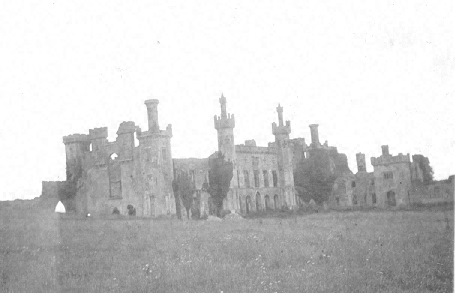
|
| Knocklofty | A mainly 18th century house, cited by Wilson as the seat of John Hely Hutchinson in 1786. In 1840 the Ordnance Survey Name Books describe it as "spacious and handsome, having a fine plain front". It was valued at £70 in the mid 19th century, the seat of the Earls of Donoughmore until 1983, though Walford mentions Samuel H. Goold-Adams of Knocklofty in 1885. The Irish Tourist Association surveyor writes that Knocklofty was De Valera's headquarters for a time during the Civil War. Until recently it served as a hotel but in 2013 it was offered for sale. |

|
| Kilgrogy House | A Clutterbuck home, occupied by Thomas Clutterbuck in 1814. The Ordnance Survey Name Books refer to it as the residence of Samuel Clutterbuck in 1839 and mention that it was in bad repair. Lewis refers to it as the seat of L. Clutterbuck in 1837 and Samuel Clutterbuck was the occupier in the early 1850s. He held the property from Viscount Lismore. The buildings were valued at £14. A building is still located at this site. | |
| Marlhill | This house was the residence of Robert Prendergast in 1814. In 1840 the Ordnance Survey Name Books also record it as his residence under the slightly variant name of Marlow Hill. James Prendergast held the house valued at £12.15 shillings from the Reverend John Bagnell with 182 acres in the mid 19th century [see Bagnell entry in ''Burkes Irish Family Records'']. Home of the Rice family from the 1860s. A building still stands at this site. | |
| Tubbrid | Laurence Walsh occupied a house valued at £11.10 shillings and held from Lord Waterpark in the mid 19th century. This house still functions as a farm house. |

|
| Monroe House | Charles Browne was occupying this house in the early 1850s. He held it from the Earl of Glengall and the buildings were valued at £10. A house and farm are still extant at the site. | |
| Caher Park | Bence Jones writes that this house was built by Lady Margaret Charteris in the early 1860s to the design of Lanyon, Lynn and Lanyon. Valued at £45 in 1906, the house burnt down in the 1960s after being sold following the death of Lieutenant Colonel R.B. Charteris in 1961. Also known as Cahir Lodge. |
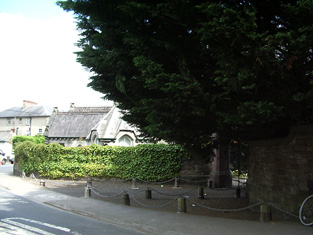
|
| Caher House | A house lived in by the Butler family when they ceased to use Caher Castle as a residence. Wilson mentions the seat of Lord Caher in the town. Located in the town square of Caher it now functions as a hotel. Leet records Lord Cahir as resident at Cahir Castle in 1814 but by 1837 Lewis writes that Cahir House was the seat of the Earl of Glengall. He held this house in fee at the time of Griffith's Valuation when it was valued at £100. |

|
| Mill View | This house was the home of the Sargent family in the 19th century, inhabited by Henry Sargent in 1814 and at the time of Griffith's Valuation. It was held from the Earl of Glengall and valued at £30 in the early 1850s. This house is no longer extant. | |
| Garnavilla | A branch of the Nagle family lived at Garnavilla in the 18th century. They held it on a lease from Lord Caher. James Archer Butler was the occupant of this house in 1837 and in the early 1850s when the house was valued at £21 and held from the Earl of Glengall. A building is still extant at this location. | |
| Ballybrada | The residence of Joseph William Fennell in 1814 and 1837. In 1840 the Ordnance Survey Name Books describe "Ballybrado House" as "old and plain, the residence of William Pnnyfeather". Thomas Fennell held the house and offices and 206 acres including a Quakers' graveyard from William Pennefather at the time of Griffith's Valuation. The buildings were valued at £21. The original house as marked on the first Ordnance Survey map is not extant now. The National Inventory of Architectural Heritage website features Ballybrada House built 1879, possibly by the Denny family. Charles E. Denny was resident in 1906 when the buildings were valued at £141+. |
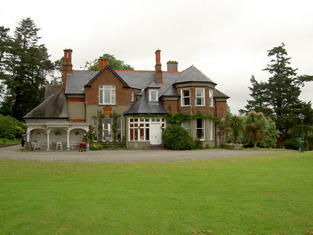
|
| Cottage (Caher) | The residence of George Fennell from 1814 until at least the mid 19th century, when it was valued at £22+ and held from Mrs Rachel Haughton. A building is still located at this site. | |
| Caherabbey House | Occupied by John Fennell in 1814 and by Richard Grubb in 1837. Montgomery records that Richard Grubb built a house at Cahirabbey circa 1833. Richard Grubb held the property in fee at the time of Griffith's Valuation when the buildings were valued at £70. He also had a flour mill closeby valued at £200. In 1894 Slater notes it as the seat of Rev. George Grubb. This house continues to be a family home. In 2013 it was offered for sale. |
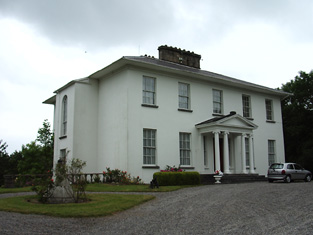
|
| Alta Villa | The home of a branch of the Going family for much of the 19th century. Charles Going was resident in 1814, William Going in 1837. The Ordnance Survey Name Books describe it as "of modern structure in good repair" in 1840. William Going was also the occupier at the time of Griffith's Valuation when the house was valued at £22+ and his flour mill at £66. The property was held from the representatives of Dunbar Barton. Alexander Going of Alta Villa owned 313 acres in county Tipperary in the 1870s. Sir T. Warren lived at Alta Villa, Cahir in the mid 20th century. Alta Villa is still extant and occupied. |
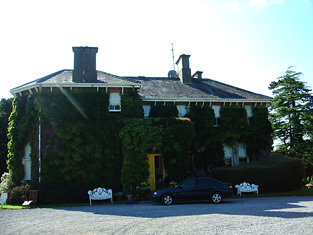
|
| Rochestown | Rochestown came into the possession of the Barton family through the marriage in 1798 of Dunbar Barton and Elizabeth Riall. In 1837 Lewis describes Rochestown as the seat [of their son] S. Barton. Samuel Barton was resident in the early 1850s holding the house valued at £37 from a member of the Beamish family. The National Inventory of Architectural Heritage records the remodelling of the house in 1867 by the Wise family, the design by Sir Thomas Newman Deane. The house was valued at £55 in 1906 and occupied by Francis H. Wise. Damaged by fire in 1918 and completely destroyed by fire in February 1923. |

|
| Keylong | In 1786 Wilson refers to this house as the seat of Mr. Butler. Key-long was the residence of Richard Butler in 1814 and in the early 1850s Richard Carew was the occupier, holding the house valued at £12 from Thomas Going. This house is still a family residence. |
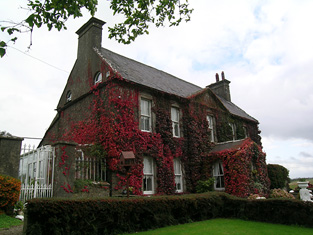
|
| Swiss Cottage | A thatched house built in a wooded area early in the 19th century and "probably designed by John Nash" (Bence Jones p.53). In the mid 19th century it was valued at £9 and held by the Earl of Glengall in fee. A lithograph of this building is included in the Glengall sale rental of November 1853 and the Burmester, Law and Sadlier sale rental of November 1857. Now in use as a heritage centre. |
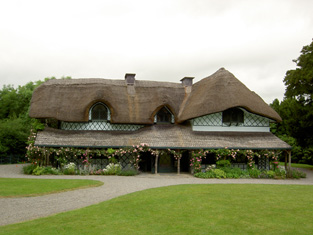
|
| Killemly Lodge | In 1837 the proprietor of Killemly Hall was H. Hughes but it was occupied by L. Clutterbuck. The Ordnance Survey Name Books also note it as his residence in 1840. The house was vacant in the early 1850s, valued at £9.15 shillings and held by Thomas Going from Mrs Catherine Sarsfield. There was a small corn mill nearby. A house is still extant at this location. | |
| Loughlohery | In 1786 Wilson refers to "Loughlokery" as the seat of Mr. Dogherty. The residence of William Quin from at least 1814 and held by him in fee in the early 1850s when the house was valued at £33. The Quinns were still resident at Loughloher in the 1870s. A house is still extant at the site. | |
| Corrabella | In 1840 the Ordnance Survey Name Books describe this house as "a very good building in bad repair, the residence of Miss Ann Mulcahy". It was leased to William Mulcahy by the Glengall estate and occupied by him in the mid 19th century when it was valued at £18+. A lithograph of this building is included in the sale rental of November 1853. The Mulcahys were still resident in the 1950s. This three storey house still functions as a residence. |
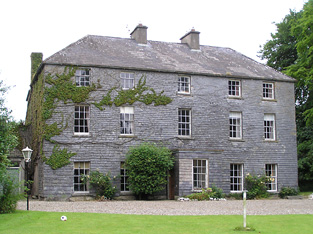
|
| Greenmount (Molough) | Originally the home of a branch of the Greene family of Kilmanahan. Occupied by Robert Prendergast in 1814. In 1841 the Ordnance Survey Name Books refer to it as the residence of Richard Butler Hamilton Low. It was leased by Southwell Mulcahy at the time of Griffith's Valuation, when the house was valued at £24 and held from the Reverend William Pennefather. Marked on the first Ordnance Survey map as Greenmount, this house is now known as Kenilworth House. |
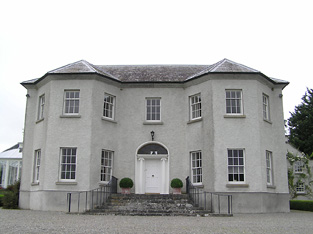
|
| Burgesland House | In 1841 the Ordnance Survey Name Books refer to Burgesland House as "a gentleman's place, the residence of Thomas Mulcahy". The house was valued at £16+ in the mid 19th century. It was occupied by Thomas Mulcahy and held from Edward Pennefather. Some ruined buildings are extant at the site. | |
| Lacken | In 1840 the Ordnance Survey Name Books noted Lacken as the residence of "Pendergrass", a house in very good repair. John Mulcahy occupied the house valued at £15+ at Lacken in the mid 19th century. He held the property from William Ryan. This house is no longer lived in. |

|
| Neddans | In 1840 the Ordnance Survey Name Books note "Neddins" as the residence of Mr. Mulcahy, "a very neat house in excellent repair". At the time of Griffith's Valuation Francis Mulcahy occupied a house at Neddans valued at £21 and held from the Earl of Glengall. A farming enterprise is still located at this site. | |
| Castlegrace | This property has been the home of the Grubb family since the mid 19th century. Griffith's Valuation indicates that it was then held from the Earl of Glengall and the house, offices and flour mill were valued at £122. The National Inventory of Architectural Heritage dates the present house circa 1860 although a lithograph of a very similar building is included in the Glengall sale rental of November 1853 for Castlegrace. Lewis records in 1837 that an extensive flour mill had recently been built by Samuel Grubb of Clogheen. The buildings at Castlegrace were valued at £115 in 1906. This house is still a Grubb family home. http://www.vee.ie/page2.html |

|
| Shanbally Castle | Bence Jones writes that this was the largest of John Nash's Irish castles, built circa 1812 for Cornelius O'Callaghan 1st Viscount Lismore. It was valued at £151 in the mid 19th century. Inherited by two daughters of the Marquess of Ormonde Lady Beatrice Pole Carew and Lady Constance Butler following the death of their cousin the 2nd and last Viscount Lismore in 1898. The Irish Tourist Association Survey in the early 1940s records that the building was taken over by the military authorities "for the duration of the present emergency". Sold by Major Patrick Pole Carew in 1954 and demolished in 1957. |

|
| Shanbally | In 1786 Wilson refers to Shanbally as a seat of Viscount Lismore. It was occupied by John Mahoney and valued at £10.15 shillings at the time of Griffith's Valuation, held from Viscount Lismore. In 1894 Slater refers to it as a residence of Viscount Lismore. | |
| Ballyboy | The residence of John Travers in 1814, of R. Croker in 1837 and vacant in the early 1850s when it was held by James Fennessy from Viscount Lismore. A house and farm are still extant at the site. | |
| Rehill | Rehill was occupied by William Fennell in 1814 and 1837 but by the time of Griffith's Valuation James Mulcahy was resident, holding the property from the Earl of Glengall. The buildings which included a house, offices and corn mill were valued at £62. Sold in 1853 to Robert Murdock and leased by him to Edward Mulcahy. A building is still located as this site. | |
| Carrigataha | The home of W.J. Fennel in 1837 and in 1840. The Ordnance Survey Name Books describe it as "very pleasantly situated and in good repair". It was occupied by Thomas Fennell in the early 1850s. Thomas held the property from a member of the McCarthy family and the buildings were valued at £15. Buildings are still located at this site. | |
| Garryroan House | Robert Fennell occupied this house in 1814 and Joseph R. Fennell at the time of Griffith's Valuation, when the buildings were valued at £14 and held from Lord Waterpark. This was still a Fennell home in the 1870s and continues to be a family residence. In 2012 it was offered for sale. |

|
| Scart | The residence of Robert Croker in 1814 and of Henry Rice in 1837. The Ordnance Survey Name Books refer to it as his residence in 1840, "pleasantly situated on rising ground and in good repair". In the early 1850s Rice held the property from John Bagwell and the buildings were valued at £12+. Henry Rice may have been a son-in-law of Robert Croker. see http://members.iinet.net.au/~nickred/croker_research/The_Irish_CROKER.pdf A building is still located at this site. | |
| Millgrove House | Thomas Jackson occupied this house in 1814 and William Walpole in the 1850s. Walpole held the property from Lord Waterpark and the house, office and corn mill were valued at £38. This house has recently been renovated. |
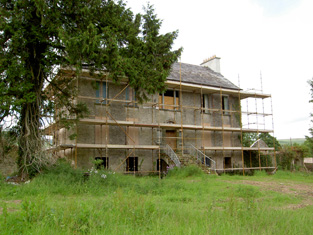
|
| Tincurry House | Abraham Jackson was residing at Tincurry in 1814. The Ordnance Survey Name Books refer to Tincurry as the residence of Stephen Moore in 1840. The building appears to have been in use as a workhouse at the time of Griffith's Valuation. In 1906 Wiliam Jackson Pigott was resident at Tincurry in a house valued at £23+. The National Inventory of Architectural Heritage states that the present house was built in 1932 on the same site as the original house which was blown up by British Forces in 1921. |

|
| Coole | A house with a gatelodge marked on the first Ordnance Survey map and located just north of Knocklofty. Occupied by Thomas Morrissey in the mid 19th century, held from the Earl of Donoughmore and valued at £16+. A building is still extant at this location. | |
| Marlfield | Built by Colonel John Bagwell MP in the late 18th century in the Palladian style. It was the seat of the Bagwell family of Clonmel in the 19th and 20th centuries, held from the Moores of Barne and valued at almost £83 in the early 1850s. The central part of the house was burnt in 1923 and rebuilt in 1925 and is now in use as an apartment complex. |

|
| New Abbey | In 1786 Wilson refers to New-Abbey as the seat of Moore Cootee. He notes that the house was close to "the great flour mills built by the late Stephen Moore". New-Abbey was occupied by Henry Moore in the mid 19th century and held from Stephen Moore, the buildings were valued at £11.16 shillings. | |
| Salisbury | Stephen Moore is recorded as resident here in 1814 and T. Sadlier in 1837. The christian name of the mother of Stephen Moore was Salisbury. By the time of Griffith's Valuation John Bagwell held the house in fee. It was valued at £18+. Percy Gough of Salisbury, Clonmel, owned 724 acres in King's County in the 1870s. Slater refers to "Inislonagh House" as the seat of Lt-Gen. Sir Charles J. Gough in 1894. Bence Jones writes that this house was leased to J.W. Cleeve in the early 20th century and from the late 1920s to Sir David O'Brien 6th Baronet. |

|
| Oaklands | William Ryal was living at Oakland, Clonmel, in 1814 and Mr Bagwell in 1837. Colonel Phipps was resident at the time of Griffith's Valuation, holding the house valued at £49.10 shillings from John Bagwell. Still occupied as a residence. |

|
| Woodrooff | The seat of the Perry family in the 18th and 19th centuries, Samuel Perry was resident in 1814 and William Perry in 1837 and at the time of Griffith's Valuation, when the buildings were valued at £66+. Samuel Perry was resident in 1906. Bence Jones writes that this house is now mostly demolished. | |
| Haywood | A house situated on the northern outskirts of the town of Clonmel, the home of Charles Riall in the first half of the 19th century. It appears to straddle the parish border between Rathronan and St Mary's Clonmel. The residence of John Riall in the 1870s. The site is now occupied by a shed. | |
| Shanballyard | Shanballyard House is marked on the first Ordnance Survey map. In the mid 19th century John Scully held buildings valued at £16+ and 299 acres from James Scully. The National Inventory of Architectural Heritage records this house as "disused". |
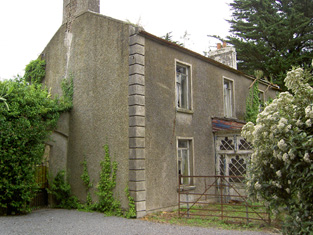
|
| Ballingarrane | Ballingarrane was originally leased and then purchased in the late 18th century by Solomon Watson, banker of Clonmel. He built Summerville House which later became known as Ballingarrane. W. H. Bradshaw occupied the house in 1837 and John Mulcahy in the mid 19th century when the buildings were valued at £25+ and held from Solomon Watson. The Watsons occupied the house again in the second half of the 19th century and family members were still resident in the late 20th century. |

|
| Glenconnor | This house also know as Larchfield was built by Solomon Watson at the end of the 18th century as a dower house for Summerville (Bence Jones). Leet records Larchfield as unoccupied in 1814. J. Bagwell was resident at Glenconnor in 1837 and Pierce Gough in the early 1850s when the house was valued at £23.10 shillings. Alderman William Byrne of Clonmel was resident here in the 1870s. Additions were made to the house in the 1880s and it was owned by a Colonel George Elliot in the early 20th century who sold it in 1938 to H.J.Cleeve. |

|
| Barn | The seat of the Moore family in the 18th, 19th and 20th centuries. In 1786 Wilson refers to it as the seat of Thomas Moore In 1840 the Ordnance Survey Letter Books note that it had "a garden nursery and ornamental ground". It was held by Stephen Moore in fee in the mid 19th century and valued at £49+. Randal K. Moore was resident in 1906 and Mr and Mrs Murray Moore in the early 1940s when the house contained a very fine library and antique art collection. Barn is still extant. |

|
| Knockeevan/Darling Hill | William Pennefather (died 1819) of Knockeevan was the second son of Richard Pennefather of New Park. Knockeevan became the home of his eldest son, Richard, Baron of the Exchequer, Ireland, who employed William Tinsley as architect in the mid 1820s. The house was originally known as Darling Hill and it belonged to the Carleton family in the 18th century. Wilson refers to it as the seat of Mr. Carleton in 1786. Oliver Carleton sold it to the Pennefathers in 1782. The house was held by the Honourable Baron Pennefather in fee at the time of Griffith's Valuation when it was valued at £54+. It later passed into the possession of Lady Emily Hankey, daughter-in-law of Baron Pennefather and then to the Stanhope family. Sold by the Stanhopes in the late 19th century or early 20th century. This house no longer exists. see http://www.dia.ie/architects/view/5338#tab_works concerning the architect. |
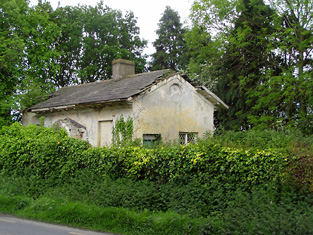
|
| Orchardstown | The home of the Hamerton family in the 19th century, occupied by John Hamerton in 1814. Mathew Hamerton was the occupier in the early 1850s holding the house from Major William M. Hamerton. The buildings were valued at £18+. | |
| Rathronan House | A property granted to John Walsh in 1679. Lewis describes this house as the "elegant residence of Major General Sir Hugh Gough". Viscount Gough was still resident in the mid 19th century when the buildings were valued at £47+ and held from Major William M. Hamerton. This property was in the possession of the Whalley family in the late 19th century. A house is still extant at the site. | |
| Rathduff | A house occupied by Thomas Kennedy and held from the Reverend John W. Hackett and partners in the mid 19th century when the buildings were valued at £16.15 shillings. | |
| Bird Hill | A house located on the outskirts of Clonmel town was the residence of a member of the Taylor family in 1837. At the time of Griffith's Valuation this house valued at £10.12 shillings was occupied by Margaret Cantwell and held from Stephen Moore with 7 acres of land. This house is still in use as a residence. | |
| Ardfinnan Castle | A building that has been added too and altered since the 15th century. Occupied by James Prendergast at the the time of Griffith's Valuation, held from the Ecclesiastical Commissioners and valued at £13. In 1894 Slater notes it as a residence of Mrs. Prendergast. Still in use as a residence. |

|
| Rockwell | Wilson refers to Rockwell as the seat of Andrew Roe in 1786. In 1814 and 1837 John Rowe/Roe was living at Rockwell. By the time of Griffith's Valuation John Bushe was the occupant, holding the property from the Court of Chancery. The buildings were valued at £40.16 shillings. John Bushe was the resident in May 1856 when the estate was advertised for sale. The buildings were altered and added too in 1865 after the arrival of the Holy Ghost Fathers who started a school. This school still operates as one of Ireland's well known boarding school. http://www.rockwellcollege.ie/missionstatement.html |
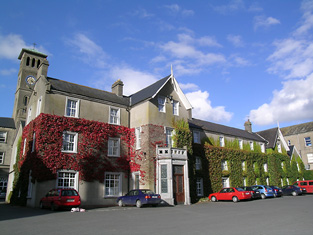
|
| Boytonrath | T. O'Meagher was the proprietor of Boytonrath in 1814. The Ordnance Survey Name Books refer to Richard Anderson as the occupant in 1840. In the early 1850s Henry Andrews was the occupier holding the property from the representatives of William Roe. The buildings were valued at £12+. A house and farm are still extant at the site. | |
| Belle Vue | Belle Vue house situated in Belle Vue Park in the townland of Boytonrath was occupied by Andrew Roe in 1814 and by George Roe in 1850. The buildings were valued at £9.15 shillings. The house has been altered over the years and is still the centre of a working farm. |
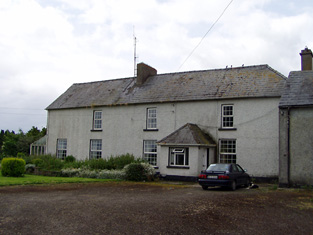
|
| Ballinamona | Ballinamona was the home of the Murphy family in the 19th century, occupied by William Murphy in 1814 and in 1850. The buildings were valued at £21.15 shillings and held in fee. Edmund William Murphy was resident in 1906. |

|
| Deerpark | This house valued at £34.12 shillings was occupied by John Hare and held from the representatives of - Wyse in the mid 19th century. The National Inventory of Architectural Heritage survey indicates it was built around 1850. It is still extant. |
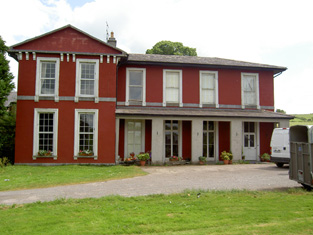
|
| Lowesgreen | Lowesgreen was the home of Richard Butler Hamilton Lowe in the 1780s. By 1814 Benjamin Bradshaw was resident here and Mrs Hannah Carey was occupying the house in the mid 19th century when it was valued at £16+ and held from Robert [Richard] B. Lowe. The Newenham sale rental of 1865 records Solomon Watson as tenant and representative of Hamilton Lowe who had been granted a lease for lives renewable for ever from John Newenham in 1753. A house is still extant at this site. | |
| Westgrove | Arthur Riall was residing at Westgrove in 1837 and in 1850 when the house was valued at £23+ and held from Robert Maunsell. This house is still in use as a residence. |
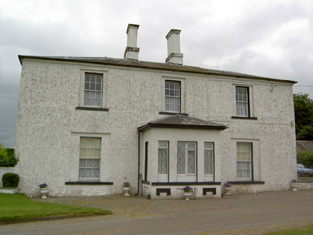
|
| Donegal | John O'Halloran occupied Donegal House in the mid 19th century which he held from Arthur Riall. The buildings were valued at £12.18 shillings. This house no longer exists but a farm complex is still located at the site. | |
| Loughkent | Nicholas Dogherty is recorded as the occupier of Loughkent House in 1814 and in 1850, when he held the house valued at £12.18 shillings from Arthur Riall. It is no longer extant. | |
| Garranlea | A Keating home from the 18th century, occupied by Leonard Keating in the first half of the 19th century. In 1800 Leonard Keating married Lucinda Scully of Kilfeacle. Their son, Robert, was Member of Parliament for county Waterford in the late 1840s. In 1850 he held the property from the Earl of Clonmel and the buildings were valued at £34+. This house no longer exists. | |
| Marlhill | Edward O'Meagher was the occupier of Marlhill in 1814. The Ordnance Survey Name Books mention Marlhill as the residence of J. O'Meaghar in 1840. Thadeus O'Meagher was the occupier in 1850. Thadeus held the house and 120 acres from Stephen O'Meagher and the buildings were valued at £22+. Buildings still exist at this site. | |
| Woodinstown | Woodinstown was the home of a branch of the Carew family in the 18th and 19th centuries. Robert Carew was resident in the first half of the 19th century, holding the property in fee at the time of Griffith's Valuation when the buildings were valued at £16. This house is no longer extant. | |
| Garraun | In the early 1850 John O'Meagher occupied a steward's house at Garraun which he held from - Stratford. The buildings were valued at £12+. A farming enterprise is still located at this site. | |
| Maginstown | A house valued at £13+ in the townland of Maginstown was occupied by James O'Donnell at the time of Griffith's Valuation and held from William Fennell. Buildings are still located at this site. | |
| Castlelake Cottage | Major M. Lidwell was resident at Castlelake, Cashel, in 1814. In 1837 Lewis records a distillery and the neat residence of Thomas Mathew. The Ordnance Survey Name Books refer to it as being occupied by Mathew Gilbert in 1840. These buildings appear to be in the possession of the Poor Law Commissioners at the time of Griffith's Valuation, valued at £40+ and held from General Hall. The buildings no longer exist. [In 1786 Wilson may be referring to this property when he note a seat of Mr. Burke at Castlelake]. | |
| Rock View | Rock View, Cashel, was occupied by John Lane in 1814, by Sam Cooper in 1837 and by Mrs Margaret Matthews in the early 1850s. The buildings were valued at £18.16 shillings and held from General Hall. This house, located close to the road between Golden and Cashel, is still occupied. |
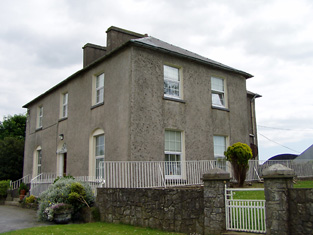
|
| Racecourse Hall | Lewis records Avary Jordan as the proprietor of Race-Course Lodge in 1837. The house was valued at £35 in the mid 19th century, occupied by Avary Jordan and held from the Cashel Commissioners. Mrs Jordan of Racecourse owned 3 acres in the 1870s. This house, located just south of the town of Cashel, still survives as a fine country residence. |
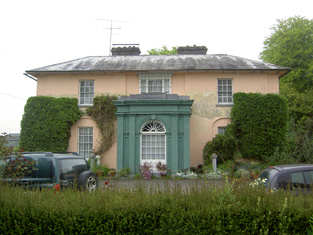
|
| Tullamain Castle | Tullamaine Castle was the home of John Power, father of the 1st Sir John Power, Baronet. Leet records J.D. Scully as resident at Tullaghmain-castle, Fethard, in 1814. This was James Scully (1779-1853), fourth son of Jeremiah Scully of Silverfort. By 1837 Lewis records John Maher as resident though the Ordnance Survey Name Books in 1840 refer to the proprietor as a Mr. Walsh. By the time of Griffith's Valuation Maher is recorded as holding the property in fee. The buildings were valued at £44.16s. By the mid 1870s Tullamaine Castle belonged to Henry Maynard Harding who advertised it for sale in July 1880. Slater still refers to it as his property in 1894. Dr M.J. Barry was resident at Tullamain in 1906. The castle was burnt in the early 1920s but rebuilt and is still a country residence. In the early 1940s C. A. Vigours was resident. |
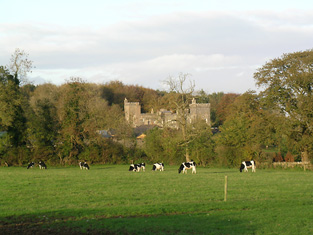
|
| Kilnamack | In 1849, the representatives of John Greene were leasing this property to Edward Butler when it was valued at £12 11s. Both Wilson and Taylor and Skinner had also recorded it as a residence of the Greene family in the 1780s. It is still extant and in 2013 was offered for sale. |
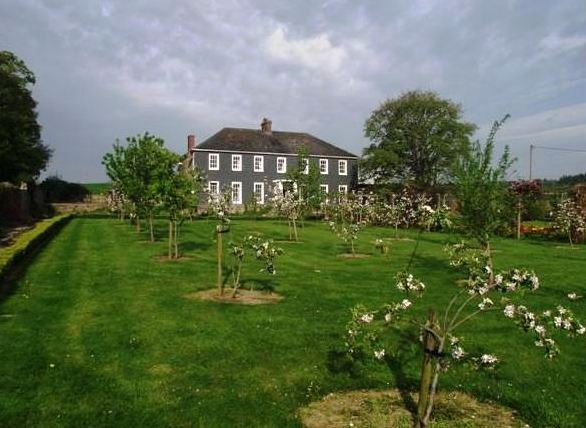
|
| Bansha House | Bansha House is marked on the first edition Ordnance Survey Map circa 1840. It was the home of Robert Clarke, fourth son of the Reverend Marshal Clarke, in 1837. John Vincent occupied a house valued at £20 in this townland at the time of Griffith's Valuation. He held it from Richard Butler. The National Inventory of Architectural Heritage dates this house from about 1880. It now functions as a guest house. http://www.tipp.ie/banshahs.htm |

|
| Kilfeakle | A home of the Bunbury family in the mid 18th century and later of the Scully family. James Scully was resident at Kilfeacle in 1814. Mrs Scully, [widow of Denys Scully, son of James], was the occupier in 1837 and her fourth son Thomas was resident at the time of Griffith's Valuation. He held the property from the representatives of B. Bunbury. By the early 20th century Kilfeakle House was in ruins. | |
| Ballydrehid | In 1786 Wilson refers to Ballydrehid as a seat of Viscount Lismore, "pleasantly situated on rising ground". The home of Robert Keating in 1814 and of Robert Doherty in the early 1850s. Doherty held the property from Viscount Lismore and the house was valued at £17. This house is still extant and occupied. |

|
| Kilmoyler | A late 18th century house, the seat of the O'Meagher family, occupied by Dennis O'Meagher in 1814 and 1837 and by Stephen O'Meagher at the time of Griffith's Valuatiton. He held the property in fee and the buildings were valued at £40. In 1865 this property was advertised for sale by the Prestons. The rental records that the house was held on a lease dated 1860 from William O'Meagher to Standish Butler who was resident at the time. In 1786 Wilson had recorded "the castle and house at Kilmoyler, the ancient seat of Colonel Butler". Still extant and occupied. |

|
| Kilshane/Arraghslea | Kilshane Cottage was occupied by Captain Blackmore in 1837 and noted by the Ordnance Survey Name Books as "the residence of Captain Blackmore, in excellent repair" in 1840. It was occupied by Henry Blackmore in the mid 19th century, when the house was valued at £11 and held from Simon Lowe. The Blackmores were related to the Lowes. This building is named Kilshane on the first edition Ordnance Survey map. Buildings in Kilshane valued at £12 were still in the possession of the Lowe family in 1906. This house later became known as Arraghslea and following a townland boundary change was located in the townland of Springhouse. |

|
| Kilshane/ Spring House | It is not clear where the McCarthy house at Springhouse was located but a building is marked on the first edition Ordnance Survey map as Spring House, later known as Kilshane. In 1786 Wilson refers to Spring House as the seat of Mr. McCathy. Thomas McCarthy resided at Springhouse in 1814. The present house was built in the 1820s by John Lowe and was designed by C. F. Anderson. It continued to be the home of the Lowe family throughout the 19th century. Lewis refers to Spring House the residence of J. Low. Simon Low held the property in fee at the time of Griffith's Valuation when the house was valued at £75. The Lowes were still resident in 1906. This house was renovated and restored in the early 21st century and now functions as a hotel. see http://www.kilshanehouse.ie/Contact.html |

|
| Castlepark House/ Mantle Hill | In 1786 Wilson refers to the seat of Mr. Alleyn on the left at the entrance to Golden. He may be referring to the early house at this site, shown as Castlepark House on the first edition Ordnance Survey map. By the early nineteenth century it was the home of the Creagh family. Richard Creagh was resident in 1814 and 1837 and Lawrence Creagh held the property from Kingsmill Pennefather at the time of Griffith's Valuation. The buildings were valued at £65. Later bought by the Scullys, when it became known as Mantle Hill. Occupied by Vincent Scully in 1906. The house is no longer extant. |
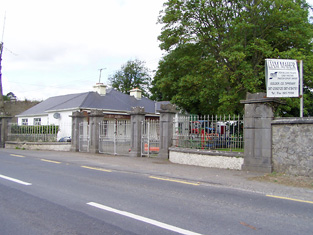
|
| Ballycarron | The Butlers are described as "of Ballycarron" from the early 18th century. Ballycarron was the residence of Thomas Butler in the 19th century, held from Michael Gavin in the 1850s when the buildings were valued at £36. ''Burke's Irish Family Records'' states that the proceeds of the sale of the Ballycarron estate and the house itself were bequeathed "to the Church". This building is now divided into residential apartments. | |
| Suirville | This house was the home of Peter Smithwick in the early 19th century. Suirville was held by Richard Butler from Michael Gavin at the time of Griffith's Valuation and the house, valued at £10, was occupied by Miss Alice O'Connor. The sale rental of 1873 shows William Roche as tenant, trustee for Mr Butler. The Irish Tourist Association Survey records Suirville as the birthplace of Sir William Butler in 1838. The house was a ruin in the early 1940s. | |
| Ballyslatteen | Richard Butler, a younger brother of Thomas Butler of Ballycarron, was resident at Ballyslatteen in 1837 and at the time of Griffith's Valuation. He held the property from the Honourable John Massey and the buildings were valued at £20. Included in the sale of the Earl of Portarlington's estates in June 1856. A building is still located at this site. | |
| Suir Castle House | Suir Castle was the home of a branch of the Massy family in the latter part of the 18th century. Two buildings are marked on the first edition Ordnance Survey map Suir Castle and Suir Castle House. The Inventory of National Architectural Heritage dates the house from circa 1820. Suir Castle [Grid Ref. S004 352] was occupied by Joseph Robbins in 1814 and in 1837. In the mid 19th century Suir Castle House was held by Francis Massey in fee and the buildings were valued at £21. The Massys were still resident in the 1870s. Occupied in the 20th century by Major Harold O'Malley. For sale in 2003. |

|
| Hymenstown | This house was the home of the Robbins family in the 18th and 19th centuries. Occupied by George Robbins in 1814 and by R. Scully in 1837. Michael Cleary was resident at the time of Griffith's Valuation holding the property from Nathaniel E. Robbins, when the buildings were valued at £20. Included in the sale of the Earl of Portarlington's estates in June 1856. John Graham was living at Hymenstown in the 1870s. This house is still extant. |
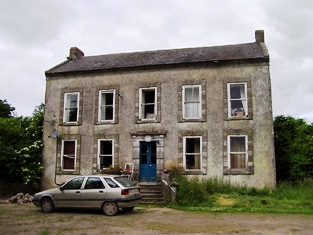
|
| Spring Mount | J. White was living at Spring Mount in 1837 and at the time of Griffith's Valuation Robert W. White was the occupier, holding the property from William Scully. The house was valued at £17. The Whites were still occupying Spring Mount in the 1870s. |

|
| Athassel | James Scully was occupying this house at the time of Griffith's Valuation. He held it from Richard Creagh and the buildings were valued at £30. This house is still a residence. |
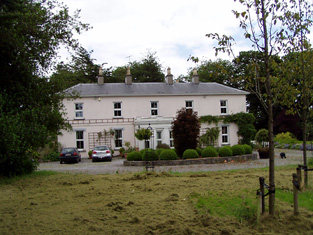
|
| Rathcloheen | Rathcloheen was the home of John Mathew in the first half of the 19th century. The house is situated very close to Thomastown Castle. At the time of Griffith's Valuation John Mathew held Rathcloheen from Lynn Carew and the buildings were valued at £20. "Burke's Irish Family Records" refers to John Smithwick of Rathclogheen, county Tipperary who married Cherry Pennefather in 1823. This house is well preserved and is still used as a residence. |

|
| Barnlough | This house was a Smithwick family home in the 18th and early part of the 19th centuries, occupied by Thomas Smythwick in 1814 and by P. Smithwick in 1837. Barnlough was held by the Earl of Portarlington in fee at the time of Griffith's Valuation, when the buildings were valued at £11.10 shillings. It is no longer extant. | |
| Ardpaddin | Mary Mulcahy was leasing this property from the Earl of Stradbroke's estate in 1850, when it was valued at £10. A substantial farm is still extant at the site. | |
| Toureen | The first edition Ordnance Survey map marks Toureen House, later maps show a house located a short distance to the south west. Leet and Lewis records Denis O'Meagher as resident at Toureen. This may be the dairy house and offices recorded in Griffith's Valuation and valued at £3.5 shillings held by Stephen O'Meagher in fee. The 25-inch map of the 1890s indicates Tooreen House and a house and substantial farm are still extant at this site. | |
| Whitesfort | At the time of Griffith's Valuation John Norris was leasing this property from the Stradbroke estate when it was valued at £11. Referring to the 1770s Sadleir notes "John White, of Whitefort" who was married to a daughter of Ambrose Lane. It is not named on the 1st edition Ordnance survey map though buildings and a walled garden are visible. The ruins of some buildings remain. | |
| Suir Mount | The representatives of James Fitzpatrick were leasing this property to John Egan in 1850 when it was valued at £13 11s. The house was included in the sale of the estate in May 1850 when it was described as " a good substantial dwelling house". | |
| Ballydonagh House | Described as a steward's house at the time of Griffith's Valuation, when it was held in fee by Maria Fitzpatrick and valued at £13 9s. Labelled Ballydonagh House on the 25-inch edition of the Ordnance Survey in the 1890s. | |
| Kilmanahan Castle | Robert Sparrow was leasing this property from the Greene estate in 1850 when it was valued at over £72. It was offered for sale as part of William Greene's estate in July and December 1852. The sale notice includes a lithograph of the castle. It was bought by Alexander Glasgow who sold it on to the Earl of Donoughmore in 1855. Earlier, in 1786, Wilson notes it as the seat of Mr. Greene. In 1837, Lewis refers to it as the seat of Lt. Col. Nuttall Greene. Hussey records Thomas Wright Watson of Kilmanahan Castle in the mid 1870s. In 1906 it was part of th Donoughmore estate and valued at £45. It is still extant. |
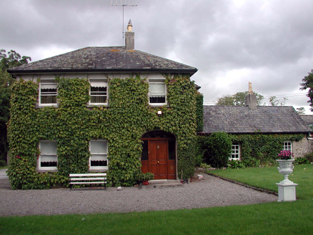
|
| Toureen Wood House | This house located on the northern fringe of Toureen wood was the home of Philip Maguire in the second half of the 19th century. The site of this house is located near a building marked on the first edition Ordnance Survey map as Maguire's Castle. The sale rental of 1875 refers to a new and comfortable dwelling house on the lands of Toureen, containing 2 good reception rooms, 7 bedrooms. a large kitchen and store room, dairy and pantries. The house was in the owner's possession. A house in the townland of Toureen valued at £7.5 shillings was held in fee by Philip Maguire in the mid 19th century. Lewis records a house known as Kilmoylermore, the residence of "the late Constantine Maguire, Esq." | |
| Ashgrove | In 1786 Wilson refers to Ashgrove as the seat of Mr. Ash. At the time of Griffith's Valuation Ashgrove House was valued at £14.10 shillings and occupied by John Henry Ashe who held it from his brother Trevor Lloyd Ashe. A lithograph of Ashgrove is included in the Ashe sale rental of 1854. It was bought by Charles Moore of Mooresfort. Ashgrove was offered for sale again in 1864. It was held on a lease dated 1815 from Trevor Lloyd Ashe to Southwell Moore for 3 lives renewable for ever. Lyons writes that Southwell Mulcahy was resident from 1858. This house is still in use as a residence. |

|
| Castle Mary | Lewis describes Ashgrove Castle or Castle Mary, the residence of the Reverend Trevor Lloyd Ashe, Lord of the Manor of Bansha, as a "castellated mansion in the Italian style of architecture, situated at the base of the Galtee mountains, 4,000 acres of which are attached to the estate". This house is marked on the first edition Ordnance Survey map. In 1840 the Ordnance Survey Name Books refer to it as the property of T.L. Ashe "of modern construction but in very bad repair". It is recorded as "in ruins" in the later 25 inch map of the 1890s. Land clearance has taken place in the area and nothing remains of Castle Mary. | |
| Ballydavid | G. Baker was resident at Ballydavid in 1837 and in the early 1850s when the house was valued at £13.10 shillings and held from the Reverend George Cole Baker. In 1786 Wilson refers to Ballydavid as the seat of Mr. Baker. In 1840 the Ordnance Survey Name Books had noted that the house was in bad repair though the demesne was described as "neatly ornamented". This house no longer exists. | |
| Aherlow Castle | This early 19th century building was the residence of James A. Butler in the 1830s. In 1840 the Ordnance Survey Name Books note that it was the residence of the parish priest of Templeneiry. The Reverend William Kane was resident in the early 1850s when the buildings were valued at £9.15 shillings and held from James A. Butler. Aherlow Castle was later the property of the Moores of Mooresfort. Count Charles Moore was the occupier in 1906 when the buildings were valued at £20. It is now a ruin. |

|
| Ballinattin | In 1786 Wilson refers to "Ballattin" as the seat of Mr. Parsons. This house valued at £17+ in the mid 19th century was occupied by Thomas Cooney and held from William Moore. A farm exists at the site and the original house is not extant. | |
| Ballinattin House | Occupied by Denis Cooney at the time of Griffith's Valuation, valued at £13+ and held from Edward B. Vise. This house is still extant and occupied. | |
| Clashleigh | Lewis records Claishleigh as the residence of S. Grubb and in Griffith's Valuation Samuel Grubb held a house, office and flour mill valued at £170 in Clogheen Market from Viscount Lismore. His son Henry Samuel Grubb lived at Claishleigh in the 1870s. This house was in use as a rectory in the 20th century. |

|
| Coolville | An early 19th century house, occupied by Richard Grubb in the first half of that century. It was held from Viscount Lismore and with offices and flour mills was valued at £169 in the early 1850s. Home of Edward Sackville West 5th Lord Sackville in the mid 20th century, who added a Gothic conservatory to the building. |

|
| Kilcoran Lodge | A house built in the second half of the 19th century, valued at £46.10 shillings in 1906, the property of Robert Murdock. | |
| Cluen House | An 18th century house originally known as Mount Kennedy. This house valued at £15 was being used as an auxiliary workhouse in the mid 19th century. It was held by John Kennedy from Thomas Slattery. In 1906 Lord Barrymore is recorded as the occupier and the building were valued at £28+. |

|
| Summerhill | Summer-hill, Clonmel, was the residence of the Reverend George Mills (sic) in 1814. The house was valued at £15+ in the mid 19th century, occupied by Mrs Dorothea Moore and held from the representatives of the Reverend Miles. In the 1870s Dorothea Moore of Dublin owned 288 acres and Henry Moore of Summerhill, Clonmel owned 247 acres in county Tipperary. Lewis refers to the handsome residence of R. Moore in 1837. |

|
| Drangan | In the mid 19th century Daniel Heffernan held buildings valued at £15 from the Earl of Lismore at Drangan Beg. Drangan House is marked on both the first and 25-inch edition Ordnance Survey maps. A house and large farm are now located at the site. | |
| Cahervillahowe | A house built post Griffith's Valuation by the Massy family. Cahervillahowe was sold to Mr Harris in the early 20th century. It is now a stud. |

|
| Mountain Lodge | In the mid 19th century Viscount Lismore owned a house/hunting lodge valued at £7 in the townland of Cullenagh (2,740 acres) which he also owned. This building has since been extended and is still in use as a youth hostel. |

|
| Athasselabbey | A house occupied by William Dalton and held from Francis Green in the mid 19th century. The house was valued at £12+. It is still occupied. |

|
| Ballyfowloo House | At the time of Griffith's Valuation, James Heaney was leasing a holding of 130 acres from Lord Stanley's estate at Ballyfowloo. The 25-inch Ordnance Survey map of the later 19th century shows a house in this area labelled Ballyfowloo House. | |
| Cappagh (Clanwilliam) | In 1786 Wilson refers to Cappagh as the seat of Mr. Massey. At the time of Griffith's Valuation, this townland was the property of estate of Reverend John Massey Dawson. [Grid Reference is approximate]. | |
| Ballymorris | In 1786 Wilson refers to Ballymorris as the seat of Mr. Magher. By the time of Griffith's Valuation the townland was held by Stephen O'Meagher and the buildings were valued at £1. The house appears to be gone by the time the first Ordnance Survey map was published as it is not shown there. | |
| Cuckoo Hill | In 1786 Wilson referred to a house he called "Clover-Hill", three miles from Caher, "the seat of Mr. Ryall". He may have been referring to the townland named Cuckoohill which appears on the 1st edition Ordnance Map. A house is present in this townland which is labelled Cuckoo Hill House on the 25-inch Ordnance Survey map of the 1890s. At the time of Griffith's Valuation, this property was leased to Patrick Heffernan by Abraham Riall when it was valued at over £6. A house and farm still occupy the site. | |
| Chancellorstown House | In 1786 Wilson refers to Chancellors' Town as the seat of Mr. Moore. The house and surrounding demesne are shown on the first edition Ordnance Survey map but are not marked on the 25-inch edition of the 1890s. The townland was part of the estate of Stephen Moore at the time of Griffith's Valuation, though the house was leased by the representatives of Joseph Gough to Denis Daly and was valued at £7 10s. Farm buildings occupy the site now. | |
| Rosemount (Caher) | In 1840 the Ordnance Survey Name Books refer to Rosemount as a house in good repair, the residence of Robert Franklin. He is also listed as the occupier at the time of Griffith's Valuation, leasing from the Barton estate when the buildings had a valuation of £10. Robert Franklin of Rosemount is listed in Slater's Directory of 1846. The house is no longer extant. | |
| Lissava House | In 1840 the Ordnance Survey Name Books refer to Lissava House as the residence of John Egan. He was recorded among the gentry of Caher in Slater's Directory 1846. He also the occupier in the early 1850s when he was leasing it from the Earl of Glengall's estate. The buildings were valued at £12. A house is still extant at the site. | |
| Hymenstown House | Hymenstown House is shown on the 25-inch Ordnance Survey map of the 1890s. The National Inventory of Architectural Heritage suggests it was built sometime in the 1860s. The house on the site at the time of Griffith's Valuation was owned by Nathaniel Robbins and valued at under £2. In 1901 it appears to have been the property of Alex Going but was vacant at the time. Hymenstown House is still extant and occupied. |
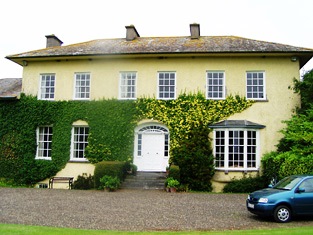
|

